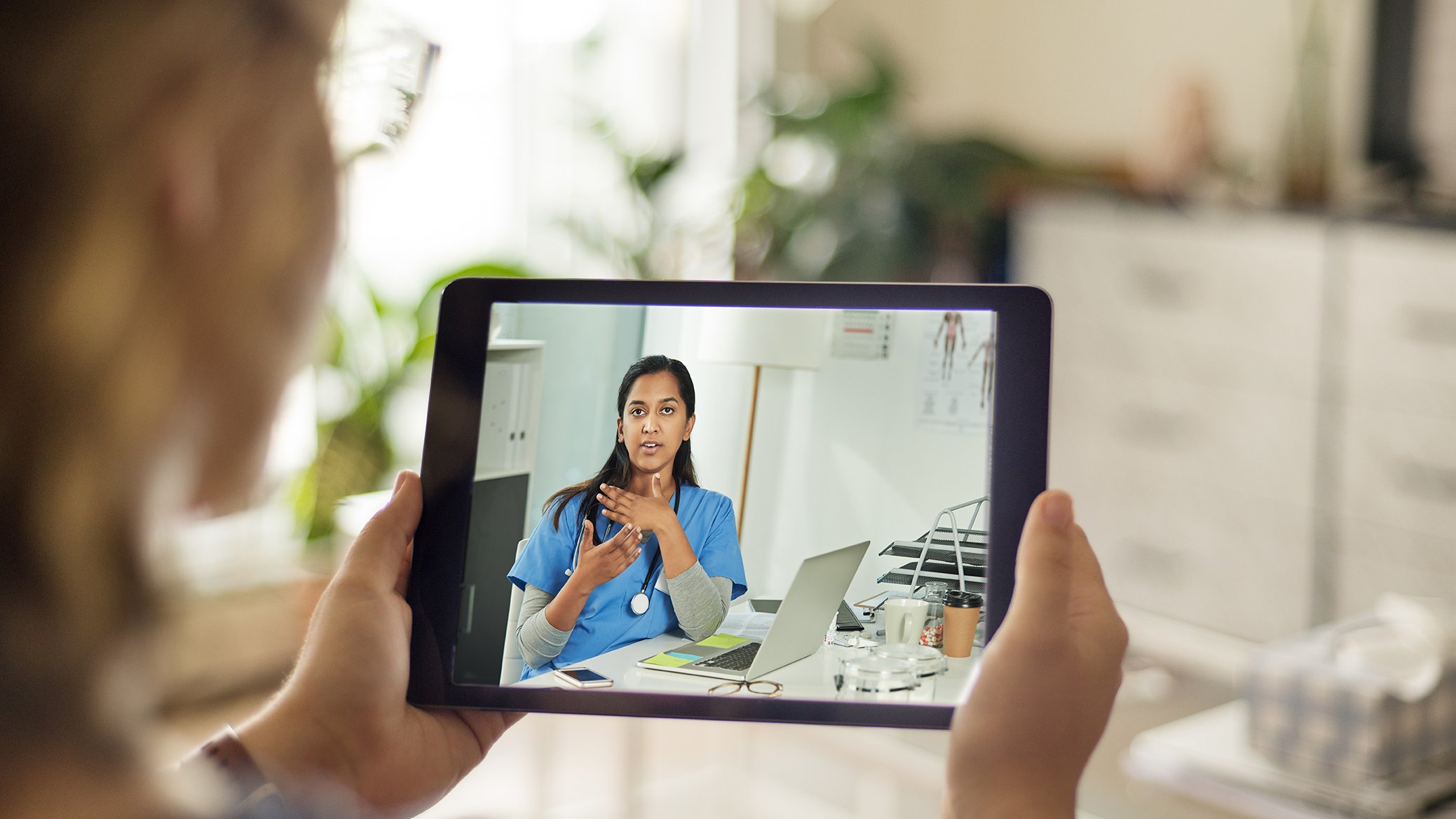Bridging the Gap: Overcoming Rural Healthcare Challenges through Enhanced Communication and Patient Engagement

Access to healthcare in rural communities has long been a persistent challenge, with barriers ranging from geographic isolation to limited resources. However, innovative solutions and improved communication strategies hold the key to addressing these challenges and ensuring that rural residents receive the quality care they deserve.This blog post explores the unique obstacles faced by rural communities and how enhanced communication, coupled with patient engagement, can serve as a transformative force. Additionally, we will delve into the role of Backline by DrFirst in supporting care teams in rural areas.
Learn how Telehealth and Patient Engagement are being used in various communities and settings.
Challenges in Rural Healthcare
There are many factors that affect health and wellness in rural communities. Here we examine four common challenges faced by care teams and patients, highlighting the critical need for innovative solutions to ensure equitable access to medical services.
- Geographic Barriers: Geographic isolation is a significant obstacle in rural healthcare, often leading to delayed or limited access to medical facilities. Many studies underscore transportation as a major barrier to rural healthcare access. The distance between rural communities and healthcare providers can result in decreased access to emergency interventions, routine care, therapies, or even medication.
- Limited Resources: Rural healthcare facilities often grapple with limited resources, staffing challenges, access to advanced technologies, and specialized services. This scarcity can hamper patients receiving comprehensive care in a timely manner and exacerbate existing health disparities.
- Healthcare Workforce Shortages: Rural areas frequently face challenges in recruiting and retaining healthcare professionals to serve in their regions. Recruiting various healthcare professionals including doctors, nurses, and other critical staff members is difficult due to the lack of access to a deep pool of talent residing in these rural communities. Often, these facilities don’t have the resources for staffing, which hinders the delivery of timely and accessible in-person care for patients.
- Internet Accessibility: Rural areas are notorious for spotty internet connections. Even with the convenience of telehealth, it may not be a possible solution in areas with unstable internet connection. The Rural Health Information Hub reports that “Many rural communities do not currently have access to internet connection speeds which support telehealth services. The broadband gap has the potential to lead to a new set of health inequities due to disparate access to telehealth.”
Communication and Patient Engagement as Solutions
This section explores the transformative role of telehealth, virtual care, and advanced technology in overcoming geographical barriers, thereby enhancing patient involvement, and ensuring access to a broader range of healthcare services not typically found in rural areas. Each factor contributes to overcoming the barriers of rural healthcare, highlighting the critical need for innovative solutions to ensure equitable access to medical services.
Telehealth and Virtual Care: Enhanced communication through telehealth and virtual care platforms can help mitigate the impact of geographic barriers. By providing remote consultations, monitoring, and follow-ups, healthcare providers can reach patients in rural areas without requiring them to travel long distances and add additional burden to patients and their families. Additionally, understanding telehealth reimbursement policies is important for providers looking for solutions to overcome these barriers for their patients.
Example: A patient in a remote rural community can consult with a specialist located miles away through a virtual appointment, reducing the need for extensive travel and ensuring timely access to specialized care.
Patient Engagement for Preventative Care: Patient engagement is crucial in promoting preventative care measures. Clear and consistent communication can educate rural residents about the importance of regular check-ups, screenings, and vaccinations, contributing to early detection and management of health conditions.Example: Regular communication from healthcare providers, such as reminders for vaccination clinics or routine check-ups, can encourage rural patients to actively participate in preventive healthcare measures.
Connecting providers and care teams through technology: Rural care teams may have limited access to the latest patient care technology. However, connecting rural clinicians with peers and larger facilities in their region can enhance the care that is offered in rural areas. Referrals, diagnoses, and transfers of care can be safer and quicker with the right communication platform on common devices like smartphones, desktop computers, or tablets.
Backline: The Rural Healthcare Solution
Aligning clinicians across the care continuum plays a significant role in ensuring positive patient outcomes. Backline streamlines workflows with flexible communication paths and integration with your other clinical systems.
 “Our focus on connecting the continuum of care with our customers helps us have a clear understanding of how connectivity and accessibility influence health and wellness in rural communities. There are tremendous challenges associated with providing equitable and excellent care in underserved and rural areas, and a lot of outstanding work is being done to tackle those challenges nationwide. However, there is more work to be done, and we are committed to helping our partners and customers provide healthcare access to everyone through our technology and expertise," said Todd Thompson, Director of Operations at Backline by DrFirst.
“Our focus on connecting the continuum of care with our customers helps us have a clear understanding of how connectivity and accessibility influence health and wellness in rural communities. There are tremendous challenges associated with providing equitable and excellent care in underserved and rural areas, and a lot of outstanding work is being done to tackle those challenges nationwide. However, there is more work to be done, and we are committed to helping our partners and customers provide healthcare access to everyone through our technology and expertise," said Todd Thompson, Director of Operations at Backline by DrFirst.
Backline is the one secure healthcare ecosystem that understands the unique challenges of rural health systems and created a solution to meet clinician and patient needs.
Case Study: Rural Behavioral Health System
One Backline client, a leading rural behavioral health system, found that it needed a robust communication platform to improve patient assessment and intake, care team collaboration, and to handle secure patient data sharing across facilities.
Challenge:
- The system had 17 inpatient facilities and 31 outpatient locations across nine states.
- The call center operated nationally, 24 hours a day and 365 days a year, and it processed roughly 26,000 calls a month, or 900 calls a day.
- The number of calls the center managed slowed response time and resulted in errors when attempting to link patients with the correct provider or care team.
Result:
The call center now relies on Backline to coordinate professional consults and patient assessment. And the Backline platform helps manage a mobile assessment team that travels to rural ERs or other access points to evaluate patients.
Improving Communication and Patient Engagement
While challenges persist in rural healthcare, advancements in communication technology and a focus on patient engagement are transforming the landscape. By leveraging tools like Backline by DrFirst, care teams in rural areas can enhance collaboration, streamline communication, and ultimately provide more accessible and efficient healthcare services to their communities. The combination of improved communication and patient engagement not only addresses current challenges but also lays the foundation for a more equitable and patient-centered rural healthcare system.
Sources:
Reference: Dobson R, Dugdale P. Rural Telehealth Research Center: Telehealth and Patient Communication. Rural Health Information Hub. Published August 2018.
Reference: Amoah PA, Edusei J, Stefansdottir G, Rambaree K, Bulley C. Enhancing patient engagement in healthcare: a systematic scoping review of current and future directions. BMC Health Serv Res. 2021;21(1):114.
Reference: Dobson R, Dugdale P. Rural Telehealth Research Center: Telehealth and Patient Communication. Rural Health Information Hub. Published August 2018.



.jpg?width=352&name=pexels-mart-production-7088498%20(1).jpg)
.jpg?width=352&name=pexels-tima-miroshnichenko-8376291%20(1).jpg)
